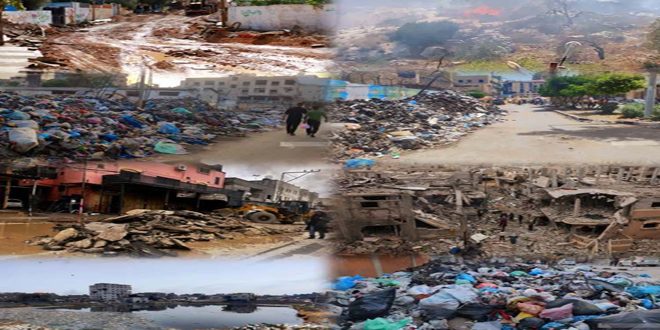The statement pointed out that since the beginning of the aggression; the quantities of solid waste have been accumulating day after day due to the depletion of fuel. The occupation prevented municipal crews from reaching the main landfills in the Strip, in addition to the exposure of waste collection vehicles and their containers to damage and destruction, and the destruction of streets that stopped transportation, which made dealing with these huge quantities difficult, in addition to the lack of disposal capabilities.
The statement clarified that the United Nations Development Program estimates that no less than 270 thousand tons of waste have accumulated in temporary landfill sites near residential areas and camps for the displaced, which threatens the spread of epidemic diseases, insects and rodents, especially with the arrival of summer and the rise in temperatures, in addition to the pollution caused by the accumulation of waste to agricultural lands and the groundwater layer.
The statement stated that 46 percent of the agricultural areas in the Gaza Strip were damaged by the bombing, and the greatest damage was in the city of Khan Yunis in the southern Gaza Strip, where 51 percent of the agricultural areas were affected, in addition to the aggression destroying the components of plant and animal biodiversity in the Strip.
Regarding the West Bank, the statement said: “The manifestations of environmental destruction resulting from the occupation are represented by the seizure of agricultural lands and water sources, the deliberate destruction of natural resources, the deliberate fires of forests and agricultural lands, the dumping of waste and industrial waste, the pollution of water, soil and air, and the establishment of settlements and the apartheid wall.

